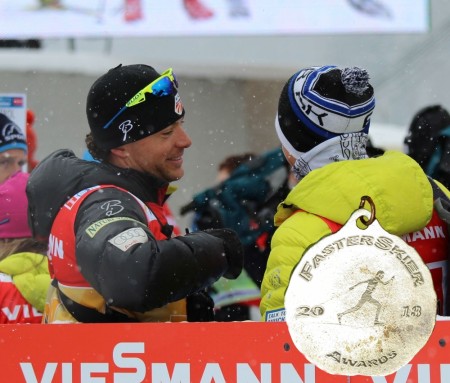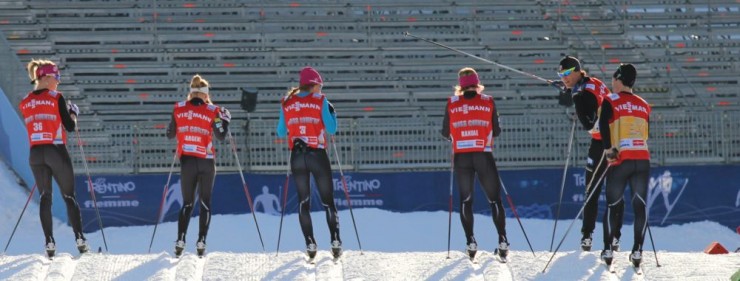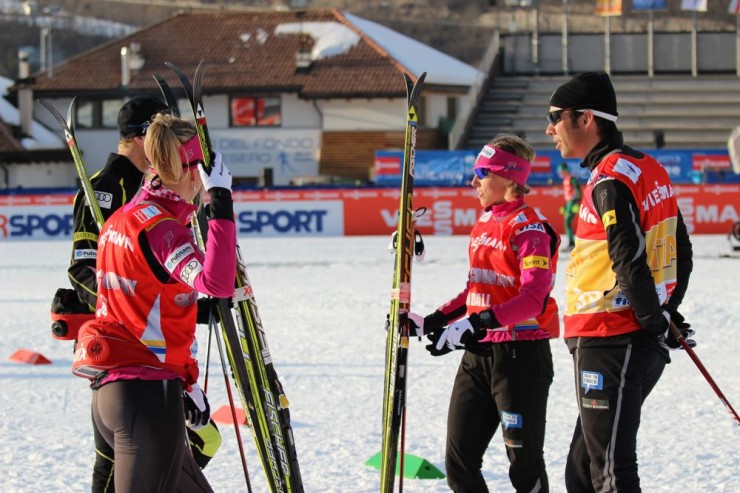
Matt Whitcomb, Women’s Coach, U.S. Ski Team
Results are by no means the full measure of a coach, but they are the simplest way for one to stand out above the rest. And in 2013, Matt Whitcomb was that outlier. The group he leads, the women of the U.S. Ski Team, just tallied its best season ever with few interruptions: a podium in a relay on opening weekend, a team sprint win in front of a close-to home crowd in December, World Championships gold in the same event in February and a World Cup sprint champion for the second year running. At the end of the season each of the six women on his team had cracked the top-10 in a World Cup. The U.S. women had the fifth-best sub-score in the Nation’s Cup rankings and they were only a few more top-15s away from landing in the top three, finishing 61 points behind Sweden and 69 points behind Russia.

Those kinds of results have been in the works for a long time — World Champions are not made overnight. Whitcomb became head coach of this group two years ago after joining the national team coaching staff in the spring of 2006. At the time, Kikkan Randall had just finished the year 59th on the overall World Cup, the highest for an American woman, and cracked the top-30 only twice. Now the USST often faces the problem of which athletes to start in a race, because so many of them are capable of being in the points or higher.
Whitcomb would be the first to point out that progress of the American women, as a whole, cannot be attributed to any single coach or team over the last few years. He would point to the development work of clubs and elite programs throughout the country, and the USST’s collaboration with them, as a huge factor in his success. Even within the national team staff, responsibilities are more often shared between Whitcomb, head coach Chris Grover and men’s coach Jason Cork than they are discretely divided. On race day, coaches and ski technicians alike line the course with spare poles, feeds and radios.
But that collaborative spirit comes from somewhere, and Whitcomb has undoubtedly played an enormous role in fostering the women’s team chemistry that has, in turn, fueled them to so much of their success. It’s not every national squad that can have six choices for its World Championships relay roster, make the difficult call of which four to field, and still have the two women on the sidelines show up for the race decked out in red, white and blue to scream for their teammates at the top of their lungs. If Whitcomb keeps leading the American women on their current trajectory, the world better watch out in 2014.
Honorable Mention:
Erik Flora, Head Coach, Alaska Pacific University Nordic Ski Club

If Whitcomb is charting new territory for the U.S. at the international level, Erik Flora is doing the same domestically. That’s not to say that Flora isn’t also doing great things on the World Cup; his role in making Randall into the best sprinter in the world has been well documented, and this year he sent four athletes to World Championships, more than any other single program in the U.S.
But Flora’s success at home is equally staggering. Year in and year out, APU sweeps the board when it comes to season-long success on the SuperTour. Three of Flora’s athletes won national titles for the first time in their careers this January. In the final NNF Cup standings this March, which like the Nation’s Cup can be taken as a broad measure of a year’s worth of results, APU stood at the top with roughly double the points of the next-closest team.
Beyond results, APU acts like a team that produces those kinds of numbers. Or maybe their success is in part due to their professionalism. Either way, rarely do you see an APU athlete preview a course or warm up by him or herself. They have the numbers to break into groups to practice drafting for a sprint and look intimidating doing it, all wearing the exact same blue and black. The APU machine is a well-oiled one, and Flora’s work in directing it is worthy of recognition.
Audrey Mangan
Audrey Mangan (@audreymangan) is an Associate Editor at FasterSkier and lives in Colorado. She learned to love skiing at home in Western New York.



